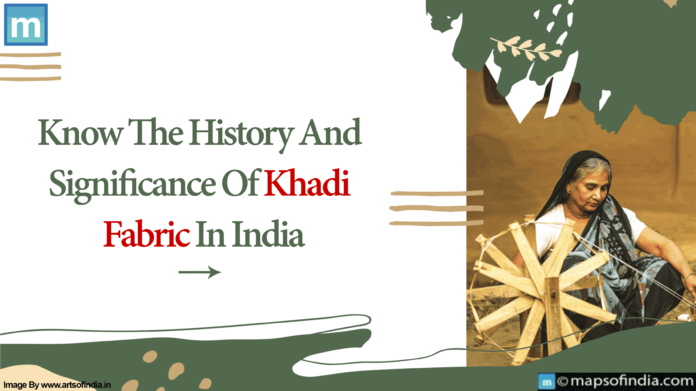Khadi is a simple fabric made from hand-spun cotton or silk yarn. It is significant in India and has been integral to its history and heritage for thousands of years. It played a central role in Mahatma Gandhi’s freedom struggle. Khadi was known as a symbol of self-reliance and unity among Indians. As you might have noticed in your surroundings, khadi continues to empower communities while celebrating sustainable traditions even today.
Ancient Roots of Khadi
Do you know where and when Khadi originated from? Well, it is said by a group of archaeologists that hand-spun cotton was first used by the Indus Valley Civilization in 2800 BC. They used it for clothing and household items. Over time, textile production became an important part of India’s diverse crafts. Regions specialised in specific techniques using cotton, silk or wool. However, hand-spun khadi is still famous for its advantages, including durability and breathability in India’s climate.
Khadi and the Swadeshi Movement
In the early 1900s, Mahatma Gandhi emphasised the importance of self-reliance and rejection of British rule. He believed that India’s rural economy could be supported by promoting khadi. This led to the Swadeshi movement. Indians pledged to shun foreign-made goods, especially clothes, and wear khadi instead. Gradually, khadi became a symbol of nationalism and non-violent protest against the British as people began to wear it.
The Charkha: A Powerful Tool
During this time, the “Charkha”, also known as the “spinning wheel”, became a focal point. Mahatma Gandhi emphasised that every Indian should spin Charkha as a form of service to the nation. You would be amazed to know that spinning created a sense of shared purpose. It was a productive work that kept people occupied positively. The spinning wheel’s chant represented India’s determined spirit of self-governance through non-violent civil disobedience.
Beyond Freedom: A Sustainable Legacy
After India gained its independence in 1947, the political significance of khadi diminished. However, khadi weavers continued their craft as it provided livelihoods. Today, khadi remains one of the most eco-friendly and sustainable textiles. Natural fibres like cotton are biodegradable, rainwater-friendly, and do not damage the soil like synthetic dyes.
Khadi Today: More Than Just Fabric
Khadi provides a diverse range of product options for today’s selection. These range from varieties of clothing, including Western-style apparel, to traditional home furnishings. While durable cotton and soft silk remain popular, new fibres like hemp and organic cotton are gaining interest for their wellness benefits. Khadi’s significant advantage is that it supports underprivileged groups such as villagers, women, and artisans with disabilities.
Wearing Khadi: A Satement of Values
Have you ever worn a khadi? Certainly, if you have, you might know that those who wear khadi do so to honour sustainable traditions and support self-reliant communities. Wearing a Khadi symbolises gratitude towards freedom fighters and promotes local development. Whether as formal Indian attire or trendy streetwear, khadi exudes pride in roots and culture. Many influential leaders still prefer khadi for official functions to respect Gandhi’s ideals of simplicity and empowerment.
The Future of Khadi
Do you foresee future opportunities for khadi production? Younger generations have helped Khadi evolve through innovative new designs yet staying true to its handcrafted origins. Designers successfully blend classic khadi with modern silhouettes to make it youth-friendly. Khadi is becoming popular globally with rising awareness of slow fashion and mindful buying. Its ability to adapt while retaining essential virtues ensures Khadi will continue inspiring people with its deeply rooted yet adaptable strength of character.




